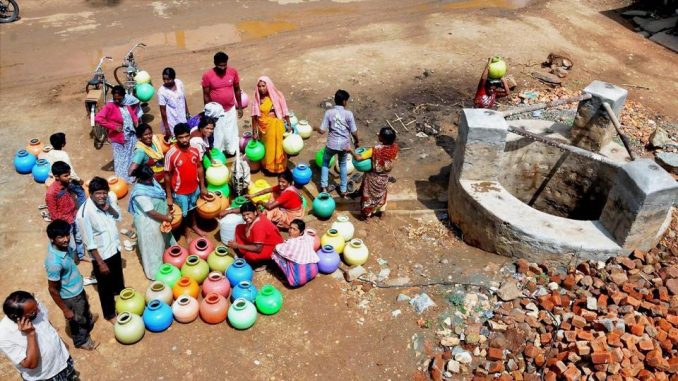Relevant for General Studies & Essay
India’s groundwater recharge is not adequate even though drought conditions are making us extract more and more of the resource, and that the people are wasting too much water.

- In a report released recently, the Indian Institute of Technology, Gandhinagar, the University of California, and the India Meteorological Department, Pune, said nearly 50% of the country is currently facing drought with at least 16% falling in the exceptional or extreme category. The drought will only hasten the pace of already depleting groundwater resources in the country. At present, Arunachal Pradesh, Jharkhand, Gujarat, and Tamil Nadu are the worst affected even though India had a normal monsoon in 2018.
- The scientists said that the situation is dire because of two reasons: India’s groundwater recharge is not adequate even though drought conditions are making us extract more and more of the resource; and people are wasting too much water. At 260 cubic km per year, the country is the highest user of groundwater in the world. We use 25% of all groundwater extracted globally, ahead of the US and China. This was not the case in the 1960s and 1970s but the need to grow more food (the Green Revolution) changed that. In 1947, the share of groundwater in agriculture was 35%; today it is 70%.
- India cannot avoid a water disaster unless people understand the critical relationship that exists between adequate river flows and aquifer recharge, and the reasons behind its current broken state. When a river flows, almost 20-30% of its monsoon water feeds aquifers, saturating the water table; 30-40% evaporates; and 40-50% flows on the surface. But when we hold the monsoon flow in a reservoir behind a dam, both the surface flow and the associated aquifers suffer. People also don’t realise that an aquifer is an ecosystem in its own right and hence when rivers don’t run free, both rivers as an ecosystem and aquifer as an associated ecosystem suffer.
- With more and more structures (dams, barrages and anicuts) being built on our rivers and their tributaries (the Ganga basin already has 942 dams, barrages and weirs in its various tributaries), the flow gets reduced and so do the opportunities for groundwater recharge. It also compromises the other natural ecological functions of a river. The situation is worse in the case of the peninsular rivers, which receive no water due to glacial melt.
- To make India water secure, we must restrict groundwater withdrawal to shallow aquifers, which get annually recharged during the monsoon season, thanks to the flowing streams. We must realise that each passing year is an opportunity lost and the sooner we realise that flowing rivers are in the nation’s larger interest, the better it would be. One of the key reasons for damming a river has been electricity generation. But now that solar power is fast replacing other methods of power production, we will hopefully see rivers flowing freely in India again.

